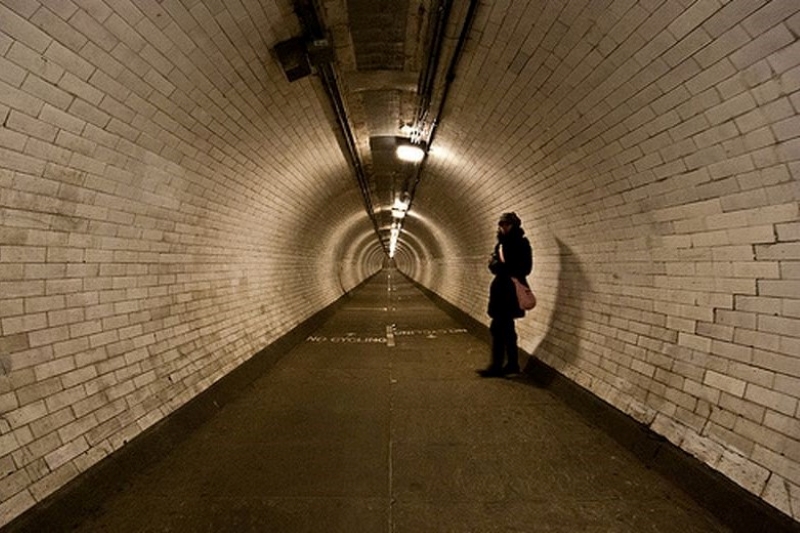
Claustrophobia: symptoms and treatment
Claustrophobia is certainly one of the most widespread phobias. The claustrophobic person can make it difficult to rescue people and/or to relate to those around him because he has an excessive and irrational fear of narrow, enclosed spaces such as tunnels or lifts
In such situations, the subject will do anything to get outdoors and fully enjoy the sense of freedom that only feeling ‘free to breathe’ can allow him.
Claustrophobia – which fears it arouses and to which it is related
The most frequent fears related to claustrophobia are the fear that the ceiling and floor will close in, crushing the people in the room, the fear that the air supply will run out and one will suffocate, and the fear of fainting due to the lack of air and light.
The cinema, obviously understood as a venue, is an unpleasant place for those who suffer from the symptoms of claustrophobia: there are no windows, the exits are not always controllable, there are many people in the room, and often one cannot move freely so as not to disturb other people.
All these unpleasant feelings often make people give up attending these halls.
One of the events most dreaded by those who suffer from claustrophobia is having to undergo an MRI scan, a test that involves placing the entire person in a very narrow and totally closed tube.
Those who suffer from this disorder in a lift are not rare, of course, and consequently avoid it wherever possible.
Another place that puts most claustrophobic sufferers off is the underground.
Here, there is just about everything: darkness, underground passages, crowds, unpleasant smells, sudden gusts of air and screeching train noises.
In addition to the classic avoidance or escape manoeuvres when faced with the phobic situation, the claustrophobic person keeps anxiety at bay by looking for seemingly logical justifications to explain why he or she makes a choice that others consider a little strange or at least unusual.
And so those with the symptoms of claustrophobia prefer to take the stairs, citing the most varied reasons: the opportunity to exercise to keep fit, the need to collect their thoughts before going to talk to someone (the lift is always too fast!), and so on.
Claustrophobia must be distinguished from agoraphobia
The latter is typical of those who suffer or have suffered from panic attacks. It is not limited to the fear of enclosed spaces, but concerns all situations, even outdoors, from which there is no quick escape (e.g. a bridge, a long queue or the motorway).
The claustrophobic’s discomfort is limited to the feeling of constriction, whereas that of the agoraphobic is related to the distance from an escape route and a point of safety.
The treatment of claustrophobia is relatively simple, as of all phobias, and necessarily passes through a course of cognitive behavioural therapy, which aims at intervening on the symptoms and producing a change and a solution to the problems rather than analysing their alleged remote causes.
Read Also
Emergency Live Even More…Live: Download The New Free App Of Your Newspaper For IOS And Android
Agoraphobia: Symptoms And Treatment
Agoraphobia: What Is It And What Are The Symptoms?
Social And Exclusion Phobia: What Is FOMO (Fear Of Missing Out)?
Trichotillomania, Or The Compulsive Habit Of Pulling Out Hair And Hairs
Impulse Control Disorders: Kleptomania
Impulse Control Disorders: Ludopathy, Or Gambling Disorder
Intermittent Explosive Disorder (IED): What It Is And How To Treat It
Knowing And Treating 9 Common Types Of Phobia
What To Know About Ophidiophobia (Fear Of Snakes)
Trichotillomania: Symptoms And Treatment
Agoraphobia: What Is It And What Are The Symptoms
Trichotillomania, Or The Compulsive Habit Of Pulling Out Hair And Hairs
Body Dysmorphophobia: Symptoms And Treatment Of Body Dysmorphism Disorder
Psychosomalisation Of Beliefs: The Rootwork Syndrome
Paediatrics / ARFID: Food Selectivity Or Avoidance In Children
Obsessive Compulsive Disorder (OCD): An Overview
Tics And Swearing? It’s A Disease And It’s Called Coprolalia
Craving: Desire And Imagination
Paranoid Personality Disorder: General Framework
Obsessive-Compulsive Personality Disorder: Psychotherapy, Medication
What Is Lima Syndrome? What Distinguishes It From The Well-Known Stockholm Syndrome?
Recognising The Signs Of Compulsive Shopping: Let’s Talk About Oniomania
What Is OCD (Obsessive Compulsive Disorder)?
Antipsychotic Drugs: An Overview, Indications For Use
Metropolitan Police Launches A Video Campaign To Raise Awareness Of Domestic Abuse
Metropolitan Police Launches A Video Campaign To Raise Awareness Of Domestic Abuse
World Women’s Day Must Face Some Disturbing Reality. First Of All, Sexual Abuse In Pacific Regions
Child Abuse And Maltreatment: How To Diagnose, How To Intervene
Child Abuse: What It Is, How To Recognise It And How To Intervene. Overview Of Child Maltreatment
Does Your Child Suffer From Autism? The First Signs To Understand Him And How To Deal With Him
Emotional Abuse, Gaslighting: What It Is And How To Stop It
Obsessive-Compulsive Personality Disorder: Causes, Symptoms, Diagnosis, Therapy, Medication
Dysposophobia Or Compulsive Hoarding Disorder
Manias And Fixations Towards Food: Cibophobia, The Fear Of Food
Teenagers And Sleep Disorders: When To Consult A Specialist?


